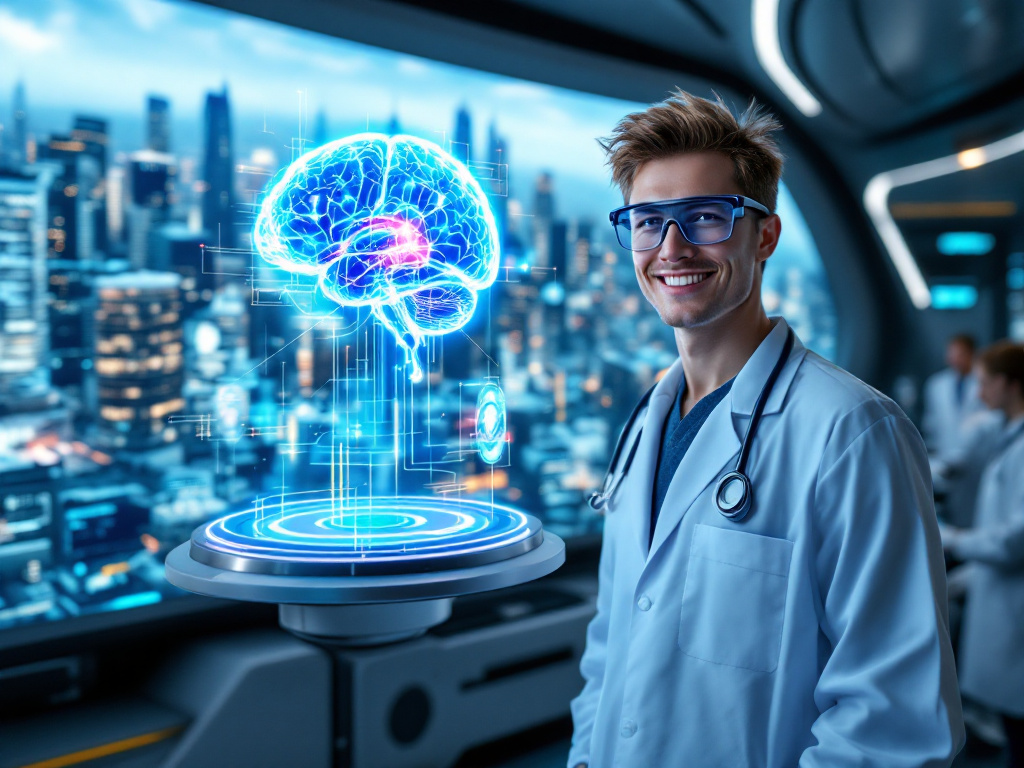Introduction
The medical field is on the cusp of a revolution, thanks to advancements in Artificial Intelligence (AI) and Natural Language Processing (NLP). In this blog post, we’ll delve into how these technologies are transforming healthcare, making diagnoses more accurate, and patient care more personalized.
The Power of NLP: Extracting Meaning from Unstructured Data
Imagine having access to the collective knowledge of medical professionals, condensed into a single platform. That’s what NLP enables – extracting meaningful insights from unstructured data like clinical notes, medical literature, and doctor’s notes. By analyzing this data, AI systems can identify patterns, relationships, and trends that might elude human clinicians.
Take, for instance, the example of a patient with a rare disease. A human clinician would need to sift through reams of literature, expert opinions, and patient histories to make an accurate diagnosis. NLP algorithms, on the other hand, can analyze vast amounts of unstructured data in mere seconds, providing actionable insights that inform treatment plans.
The Rise of Reinforcement Learning: Personalized Care
Reinforcement learning is another AI technology that’s changing the game for medical diagnosis. By analyzing patient responses to treatments and adjusting treatment plans accordingly, clinicians can provide personalized care that’s tailored to individual needs.
Imagine a patient with diabetes, undergoing a new medication regimen. Traditional methods might rely on one-size-fits-all approaches, whereas reinforcement learning enables the system to adapt to the patient’s unique response. This leads to better outcomes, reduced side effects, and improved overall quality of life.
The Future of Medical Diagnosis: A Synergy of Human and AI Intelligence
While AI and NLP are transforming healthcare in significant ways, it’s essential to recognize that human clinicians remain at the forefront of medical diagnosis. The ideal scenario is one where humans and AI systems collaborate seamlessly, leveraging each other’s strengths to deliver exceptional patient care.
That’s why it’s crucial to develop intuitive interfaces that bridge the gap between humans and machines. By designing platforms that facilitate seamless communication and data exchange, we can unlock the full potential of AI in medical diagnosis.
The Benefits of AI-Powered Medical Diagnosis
So, what are the benefits of integrating AI-powered medical diagnosis into our healthcare systems? Here are a few:
- Improved accuracy : AI algorithms can analyze vast amounts of data, identifying patterns and relationships that might elude human clinicians.
- Personalized care : By analyzing patient responses to treatments, clinicians can provide tailored treatment plans that lead to better outcomes.
- Increased efficiency : AI-powered systems can process medical data much faster than humans, freeing up clinicians to focus on high-value tasks like patient care.
- Enhanced patient engagement : By leveraging NLP and reinforcement learning, we can create more personalized and engaging experiences for patients.
Challenges Ahead: Addressing Bias and Ensuring Transparency
While AI-powered medical diagnosis holds tremendous promise, there are challenges that need to be addressed. Bias in data, algorithmic bias, and lack of transparency can all undermine the effectiveness of these systems.
To mitigate these risks, it’s essential to prioritize diversity and inclusion in our data sets, as well as ongoing research into algorithmic bias. By fostering a culture of transparency and accountability, we can build trust in AI-powered medical diagnosis and ensure that these systems deliver on their promise.
The Future of Medical Diagnosis: A Collaborative Approach
In conclusion, the future of medical diagnosis is bright – thanks to the synergy of human and AI intelligence. By leveraging NLP, reinforcement learning, and other AI technologies, we can unlock a new era of personalized care, improved accuracy, and enhanced patient engagement.
As we navigate this exciting landscape, let’s prioritize collaboration, transparency, and accountability. Together, we can build a healthcare system that’s more efficient, effective, and patient-centric – and one that truly puts the needs of patients at its forefront.

